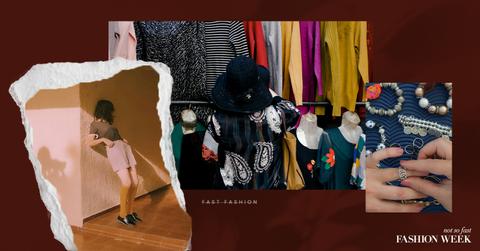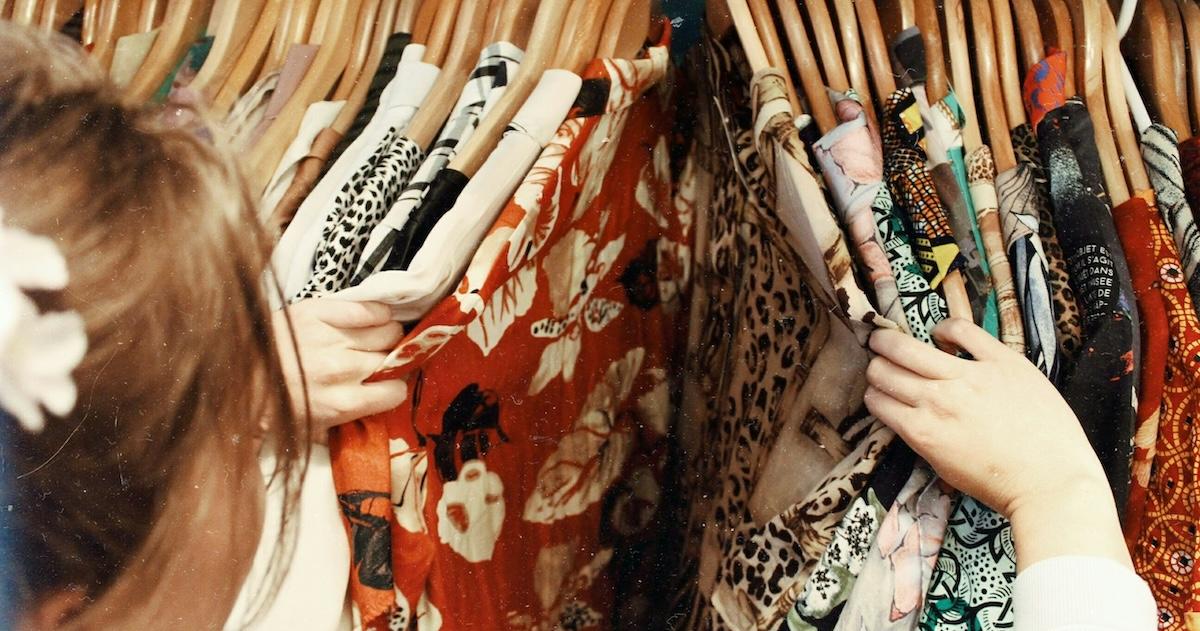How Gen Z Made Fast Fashion Uncool (Exclusive)
Gen Z and internet tastemakers are leading the movement away from fast fashion — but how did they do it?
Published Sept. 13 2024, 12:02 p.m. ET

Gone are the days when millennials set the tone for where it’s cool to shop — and thank goodness for that, because back in our day, we millennials were all about fast fashion stores.
Fortunately for the planet, Gen Z sets these trends nowadays, and the generation has declared that fast fashion is not only “out,” but also just plain bad.
But how did our society’s perception of fast fashion change so much? How did we go from blindly applauding fast fashion hauls to actually canceling influencers for partnering with Shein?
Let’s look at some of the ways Gen Z has led the societal shift in perspectives regarding sustainable and ethical fashion, along with exclusive commentary from two fashion professionals with unique insights into the industry.

For trendy young adults, Goodwill is the new Forever 21.
Thanks to increased information about the fast fashion industry’s harm, it is no longer seen as “cool.”
For years, fast fashion was the way to shop — and hardly anyone stopped to wonder how the prices were so low. But as more of us have become aware of just how harmful the industry is to the environment and to its workers, thanks to investigations into the industry, the has narrative has evolved. In 2024, the industry’s destruction is much more common knowledge than it was a decade prior.
Over the eight years she has worked in fashion, Sara Walker, a fashion industry expert and former fashion buyer, has “seen an uptick of interest in sustainability within fashion, as well as the narrative that fast fashion is bad.”
Over the phone, Walker tells Green Matters that amongst Gen Z, she has observed a rising awareness of the injustices in fast fashion. A Gen Zer herself, Walker says that in 2024, her “friends do care more about buying more investment pieces or ones that have a sustainable aspect.” This is compared to her perception of her generation back when she was in high school, when it was the norm for her and her friends to shop at Zara without a second thought; but now, they’d all rather scour the racks of a consignment store (though Walker admittedly does still shop at Zara).

Sara Walker at ANINE BING Sounds the Spirit of L.A. held at Chateau Marmont on May 2, 2024 in Los Angeles, Calif.
Thrifting can trigger the brain’s reward system.
According to Walker, shopping secondhand has “been rebranded” into “the cool thing” — in no small part thanks to secondhand shopping apps designed to feel like social media.
“I love to just scroll through and find hidden gems,” Walker says, referring to secondhand shopping apps like Depop, The RealReal, and Poshmark.
Walker notes that there’s almost a “reward” aspect to finding an amazing item secondhand, whether it’s online or in-person — something that just isn’t there when you make a fast fashion purchase.
Fast fashion hauls on social media are now bait for criticism.
Influencers used to share fast fashion hauls in peace. But these days, so many people are aware of how damaging overconsumption is — and it’s easy for them to share that information in the comments.
“If somebody's doing a Shein haul or some sort of content around fast fashion brands, you will find comments … like, ‘OK, but what about the slave labor that was involved, or the fact that they're so cheap?’” says Maya Penn, a sustainable fashion designer, author, and filmmaker.
“Now you have more and more people that are equipped with that language that recognizes and understands the connection between the unethical treatment of garment workers, the climate crisis, and textile pollution,” Penn explains to Green Matters on a call.
Walker has also noticed this shift, noting that creators are often met with “backlash” for showing off overconsumption, whether it’s a fast fashion haul, promotion of dupe culture, or display of an over-the-top collection.

Maya Penn believes that the market for secondhand clothing has grown in large part thanks to social media.
Thrifting, thrift flipping, and upcycling videos are big trends on TikTok.
On apps like TikTok and Instagram, many young adults share videos of themselves shopping in thrift stores, styling their thrifted clothing, and even thrift flipping or upcycling secondhand pieces. This has certainly inspired many others to follow suit, which Penn recommends doing by teaching yourself how to sew.
“You get a tear on your favorite sweater, [sewing it] can be a fun outlet, if you have the time and the tools to do that,” she says.
She adds that “how you treat the clothes you already own makes a difference.” Things like tailoring or upcycling clothes that don’t fit, spot treating stains, and washing your garments with care can help preserve your wardrobe. As more people embrace practices like these — and share them on social media — we can help combat the fast fashion industry’s message that clothing is disposable.
But when it comes to being a consumer of sustainable fashion, no one is perfect.
Despite all the progress, Walker still believes that fast fashion is “inevitable to some extent, because there's always going to be the customer there for it.”
She points to the “narrative on social media” in which “everybody needs to be a part of XYZ trend for less.” And with Gen Z so chronically online and FOMO-avoidant, some may ignore their eco-conscious values, and just buy whatever their favorite influencers are peddling.
But Penn’s words may galvanize people who care about the planet to resist that: “If you wear clothes every day and live on this planet, then this is something that you should care about. It's not frivolous, it's not fluffy. This is people's lives. It's the well-being of our planet.”
Reporting by Bianca Piazza.
This article is part of Green Matters’ 2024 Fashion Week programming, Not so Fast Fashion Week: A series about the designers, stylists, and creators using their creativity to push against fast fashion.